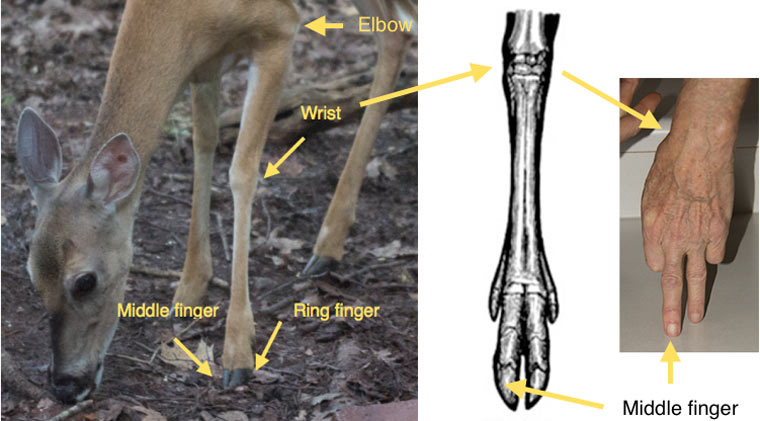I took a photograph of a deer trying to find something to eat outside our living room window. Here I am using it to illustrate a comparison between the front feet of a deer and the hand of a human.
Deer are classified in a group of mammals called “even-toed ungulates”. Ungulate is derived from the Latin for “hoof”, and as you can see in the picture, deer have two toes (an even number) ending in hooves that contact the ground. During evolution the ungulates forfeited any ability to grasp objects, as all four limbs are capped with hooves.
The primitive number for digits on hands and feet in mammals is five. Humans still have five digits on their hands and feet. However, during the course of evolution, all ungulates lost digit number one (equivalent to our thumb), and in the deer and its relatives, the digits corresponding to our index and pinkie fingers have been reduced in size and do not normally touch the ground.
Also, the deer bones which correspond to the metacarpals in the human hand (these are the bones in our hands between our knuckles and our wrists) have become greatly elongated. So what one might at first think is the deer’s knee is really equivalent to our wrist. Deer (and the other ungulates) are thus walking around on “tip-toes” using only the digits that correspond to our middle and ring fingers. This stance in effect raises them off the ground by giving them longer legs. Thus they can run faster and maintain endurance longer.
The middle portion of the photograph is a diagram of the bones in a deer foot. It shows the two “fingers” that the deer walks about on. The right hand portion of the photograph shows my hand raised up on two fingers to approximate a deer’s stance.

